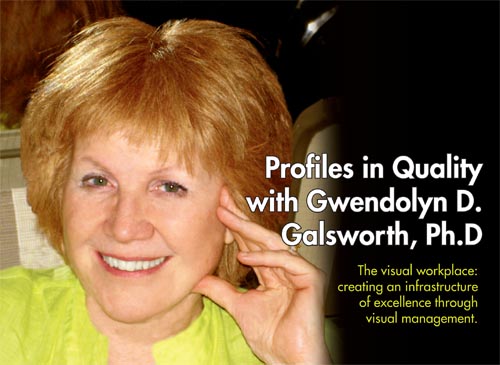
Gwendolyn D. Galsworth, Ph.D., is an educator, implementer, and a researcher with more than 25 years in the field of workplace visuality. Considered by many a leading visual expert, Galsworth is the author of a number of books on organizational improvement and workplace visuality, including Visual Workplace, Visual Thinking (Visual-Lean Enterprise Press, 2005), recipient of the Shingo Prize for Research. Galsworth, also a Malcolm Baldrige examiner, established Quality Methods International (QMI) in 1991 as a consulting, training, and research firm specializing in the visual workplace. Prior to forming QMI, Galsworth was head of training and development at Productivity Inc., where she worked closely with Dr. Ryuji Fukuda to adapt the CEDAC method for Western audiences-and with Dr. Shigeo Shingo to develop, among many things, a Western-based poka-yoke method. Galsworth was also principal developer and implementer of visual factory, TEIAN (worker-led suggestion systems), and hoshin kanri /X-type matrix planning (policy deployment). Since then, she has worked with top companies around the world to create and proof a series of methods and formulate them into a single, sustainable framework that have come to be known as the technologies of the visual workplace.
…
Comments
Add new comment